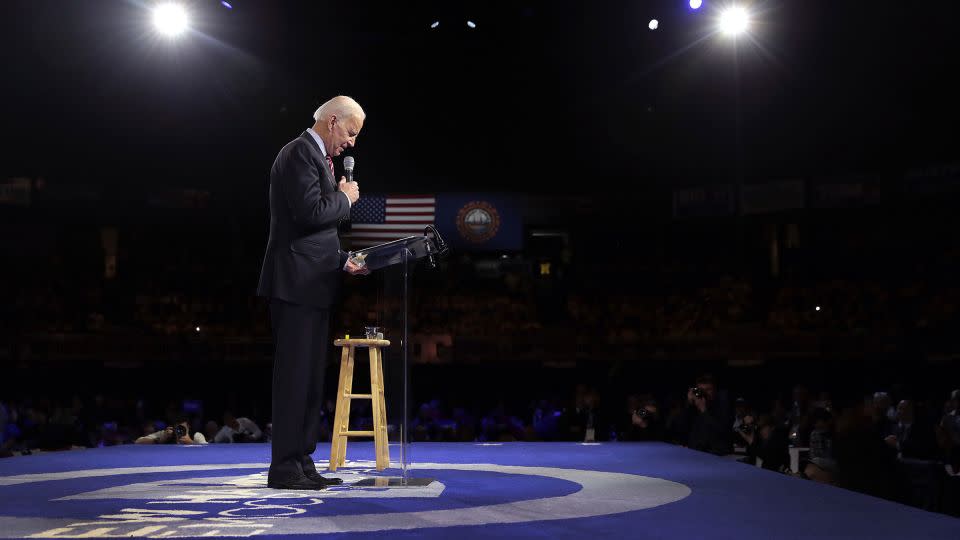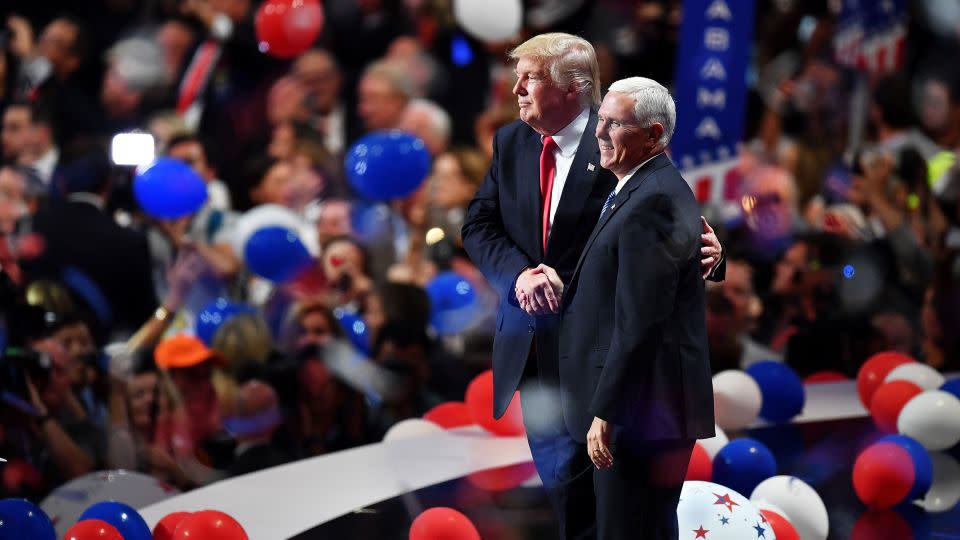2024 US presidential primaries, explained
Before Americans pick a president in November, they get to pick the candidates in a series of primaries and caucuses.
It’s a wonky process that has evolved over the course of the country’s history and continues to evolve today.
Here’s what to know:
What is a primary?
It’s an election to select candidates, usually for a particular political party, to appear on the general election ballot. Primaries award delegates, and candidates must reach a magic number of delegates to win the nomination and appear on the general election ballot in November.
Who is ahead in the primaries?
Former President Donald Trump has long been the leader in polls for the Republican presidential primary, and he has the most delegates after the contest in Iowa. A large field of challengers has winnowed down to one major opponent, former South Carolina Gov. Nikki Haley, who may have her best shot at beating Trump in New Hampshire’s primary.
President Joe Biden is the incumbent president and all but a lock to win the Democratic nomination, but he won’t even appear on the ballot in New Hampshire due to a disagreement between national Democrats and the state party over which primary should come first. Biden could still win New Hampshire’s primary through a write-in campaign, but the first sanctioned Democratic contest is in South Carolina in February.
When will we know who will win the primaries?
Keep an eye on Super Tuesday, March 5. While there won’t yet be enough delegates on the table to clinch the nomination, that is the night with the largest pot of delegates, where Republicans in 16 states and territories will vote for president.
It might take until May or June for one candidate to secure enough votes to win his or her party’s nomination. The last presidential primaries occur on June 4.
The earliest a candidate could mathematically win enough delegates to be the nominee is March 12.
Who can vote in a presidential primary?
It varies by state. Primaries are generally conducted in polling places like any other election.
But some states have “open primaries,” meaning any registered voter can vote in either the Democratic or Republican primary. Other states have “closed primaries,” meaning only people registered in a particular political party – usually Republicans or Democrats – can vote in that party’s primary.
Others offer voting day registration, which essentially opens the primaries to most registered voters.
When do the presidential primaries occur?
The first date on the presidential primary calendar was January 15, although it was not technically for a primary.
On that day in Iowa, Republican Party members gathered at events called caucuses, which are overseen by state parties and not conducted like normal elections. Trump won decisively.
Democrats also gathered that day in Iowa, but their vote for president is conducted by mail ending on March 5.
After Iowa, New Hampshire holds its “first-in-the-nation” primary on January 23, although Democrats are not sanctioning the event.
The calendar spreads out from there. Republicans compete in caucuses in Nevada and the US Virgin Islands on February 8 and South Carolina on February 24.
In some states, presidential primaries are conducted on one date and primaries for other offices are conducted later in the year. See the full calendar.
If multiple candidates win in party primaries in different states, how is the ultimate presidential candidate determined?
Delegates can either be apportioned through a winner-take-all system, meaning the top candidate in a state’s primary gets all of that state’s delegates, or they can be apportioned proportionally to the primary election results. Some states have thresholds where every candidate who gets over a certain amount of the vote – say, 20% – may be entitled to delegates.

Democrats these days apportion all of their delegates proportionally.
Republican rules this year generally require that states with primaries and caucuses before March 15 apportion delegates proportionally. States with primaries and caucuses after March 15 may switch to a winner-take-all format.
What happens if no candidate gets a majority of delegates in primaries?
Delegates are mostly required to be “bound” (the Republican term) or “pledged” (the Democratic term) to a particular candidate heading into the convention.
A very small portion of delegates in certain states and territories on the Republican side are “unbound.” These few delegates can support whomever they choose at the outset of the convention.
Democrats have “unpledged” delegates – party bigwigs – but they do not cast ballots in the first round of voting on the convention floor if they could impact the outcome.
If there’s no clear majority winner after the delegates vote, they go to additional rounds of voting where the bound delegates become unbound so that they can ultimately select a nominee. This is what’s known as a “brokered convention.”
When we say this is rare, we mean it hasn’t happened since 1952.

How did this process come about?
It evolved over the course of the country’s history. It used to be congressional delegations who would select presidential candidates.
The first election for which there were political conventions for party members was 1832, when Andrew Jackson won the White House. The first convention was held by the short-lived and long-defunct Anti-Masonic Party.
The move toward focusing on primary elections and making the system more democratic began after violence at the Democratic National Convention in Chicago in 1968, when party leaders had opted for then-Vice President Hubert Humphrey over anti-war candidate Eugene McCarthy. (Humphrey went on to lose to Richard Nixon.)
Where and when are the 2024 conventions?
The Republican National Convention runs July 15-18 in Milwaukee.
The Democratic National Convention runs August 19-22 in Chicago.
Are there primaries that are not so focused on political parties?
Yes, but not for the office of president.
A growing number of states are experimenting with nonpartisan primaries, where all voters and candidates take part in one primary election and the top finishers, regardless of their party affiliation, square off on Election Day.
These nonpartisan primaries, which feature in statewide races for Senate and governor and for House races, are not used in the presidential election.
California, Nebraska and Washington use the top-two system. Alaska has a top-four system.
Louisiana has so-called “jungle primaries.” All candidates for local, state or federal office are listed on the Election Day ballot, and if no candidate gets a majority, the top-two finishers take part in a runoff.
Will there be presidential candidates from third parties?
Yes. The Green Party will likely have a presidential candidate on the ballot in most states, and the Libertarian Party expects to be on the ballot in all 50 states. These parties will select their nominees in their own conventions.
The last time a third-party or independent candidate secured electoral votes in a general election, however, was 1968.
Do the winners in Iowa and New Hampshire usually win the party’s nomination?
Not necessarily. In 2020, Biden didn’t win either Iowa or New Hampshire, but his campaign got a reset in South Carolina and he went on to the Democratic nomination and the White House.
In 2016, Trump lost Iowa but won New Hampshire, similar to fellow Republican Mitt Romney in 2012. In 2008, Democrat Barack Obama won Iowa, but lost New Hampshire. Republican John McCain lost Iowa that year but won New Hampshire.
The last candidate to win both in Iowa and New Hampshire and go on to the White House was Democrat Jimmy Carter in 1976, although he technically placed second in Iowa, behind “uncommitted.”
This story has been updated with additional information.
For more CNN news and newsletters create an account at CNN.com


